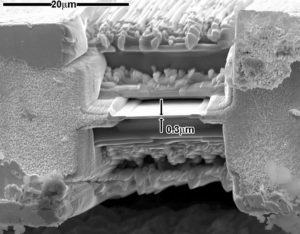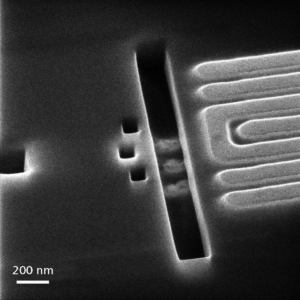Crack Chip ATMEGA644PA Heximal
Crack Chip ATMEGA644PA means the status of microcontroller ATmega644PA will be reset from locked to unlocked, and recover MCU Heximal out from its flash andeeprom memory, focus ion beam technique will be applied to do it;

Crack Chip ATMEGA644PA means the status of microcontroller ATmega644PA will be reset from locked to unlocked, and recover MCU Heximal out from its flash andeeprom memory, focus ion beam technique will be applied to do it
Note that if a level triggered interrupt is used for wake-up from Power-down mode, the changed level must be held for some time to wake up the MCU. Refer to “External Interrupts” on page 75 for details.
When waking up from Power-down mode, there is a delay from the wake-up condition occurs until the wake-up becomes effective. This allows the clock to restart and become stable after having been stopped if crack ic pic18f23k22 binary .
The wake-up period is defined by the same CKSEL Fuses that define the Reset Time-out period, as described in “Clock Sources” on page 40. When the SM2..0 bits are written to 011, the SLEEP instruction makes the MCU enter Power-save mode.
This mode is identical to Power-down, with one exception: If Timer/Counter2 is enabled, it will keep running during sleep. The device can wake up from either Timer Overflow or Output Compare event from Timer/Counter2 if the corresponding Timer/Counter2 interrupt enable bits are set in TIMSK2, and the Global Interrupt Enable bit in SREG is set after crack microcontroller pic18f25k22 program.
If Timer/Counter2 is not running, Power-down mode is recommended instead of Power-save mode. The Timer/Counter2 can be clocked both synchronously and asynchronously in Power-save mode. If the Timer/Counter2 is not using the asynchronous clock, the Timer/Counter Oscillator is stopped during sleep.
If the Timer/Counter2 is not using the synchronous clock, the clock source is stopped during sleep. Note that even if the synchronous clock is running in Power-save, this clock is only available for the Timer/Counter2.
When the SM2..0 bits are 110 and an external crystal/resonator clock option is selected, the SLEEP instruction makes the MCU enter Standby mode. This mode is identical to Power-down with the exception that the Oscillator is kept running. From Standby mode, the device wakes up in six clock cycles.
Tags: decap chip binary,decap chip code,decap chip data,decap chip eeprom,decap chip file,decap chip firmware,decap chip hex,decap chip lock bit,decap chip memory,decap chip program,decap chip security bit,decap chip software


